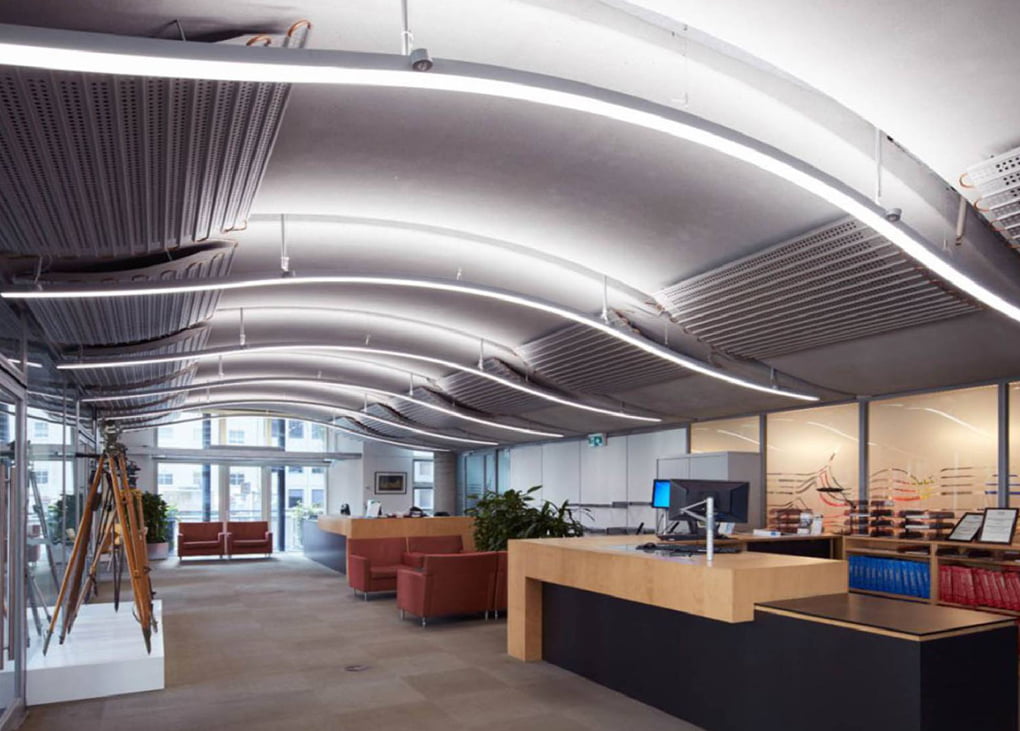The AMCA Building Ventilation Summit, to be held as a virtual event on February 24 and 25, will be looking at the role the building industry will play in preventing the airborne spread of COVID-19, and supporting Australians to return to workplaces and other indoor settings confidently, safely and sustainably. One of the key sessions will focus on people and workplaces.
The session will include presentations from Kate Cole OAM (AIOH President), Tim Wheeler (A/g National Policy Manager – Sustainability, Property Council), Professor Rob Adams (City Architect, Melbourne City Council), and Doctor Dominique Hes (Zero Carbon Buildings Lead, City of Melbourne).
HVAC&R News spoke to Dr Hes about her presentation, and the session as a whole.
Your presentation will be on “Low Carbon Options for Retrofitting Buildings to Reduce Airborne Contamination”, What are the main points you will be covering?
First, it is important for the vibrancy of Melbourne that people return to the office, but they need to feel safe. We therefore have to reduce transmission and maximise indoor environment quality – which may have knock-on effects.
If we take on all the recommendations from ASHRAE and others to minimise airborne transmission, and taking the outcomes from a recent article from Aviv et al. 2021 looking at energy implications around the world, we will increase our energy consumption by 30–50 per cent for the comfort aspects of building operations. For Melbourne this would mean increasing our predicted energy consumption of all commercial buildings by 254–428GWh of energy and adding emissions of 251,413–419,022 tonnes of CO2 equivalents. That is an 11 per cent increase in energy consumption, undoing many of the reductions we have all worked so hard on over the past decade.
We can reduce our energy consumptions by around the equivalent amount if we look at the lessons from Council House 2 (CH2) – decoupling thermal comfort from fresh air, using displacement ventilation, and using 100 per cent fresh air.
We have planned experiments for 423 Bourke Street, a Cbus Property building, that will test the reality of the above modelled prediction through three retrofit opportunities using local skills, equipment and technology. The three retrofit technologies are in-ceiling filters, personal ventilation, and column-based displacement.
We hope from this to be able to have clear indications of costs per square metre, and the impact on energy and infection control.
This is a pilot of the University of Melbourne working with the City of Melbourne, the unions and property owners as part of a future Melbourne Retrofit Program through the URIC program led by Professor Sarah Bell.
From what you’ve seen at City of Melbourne, what are the big issues that building owners/managers are facing in preventing the airborne transmission of COVID-19?
Some of the recommendations provided for reducing transmission result in energy use increases, draughts, discomfort (natural ventilation when it is 40°C or 10°C is not viable), costs to bring in additional filtration systems, increased costs, and increased man hours to manage buildings.
Another issue is that HVAC can only do so much – transmission also occurs through surfaces.
Finally, through the experience of working from home, many people do not want to come back to offices full time. This means that over the next few years, the way buildings work will need to change.
You are also participating in the People and Workplaces panel session with Kate Cole and Rob Adams. What are you looking forward to discussing in this session?
Kate has an incredible history of effective work in health and air related issues. She has worked in many contexts, and has a wealth of knowledge on how to keep people safe through the management of fresh air. I look forward to discussing how to bring the best of all research areas to working out a path forward.
Rob and I have worked together for over 20 years. One of the early projects was CH2 and I look forward to building on what he will present on CH2 as a post-COVID building to what this could mean for our older building stock. It may support building owners to have a clear set of options they can choose from to meet the needs of their occupants.
For more information on the Building Ventilation Summit and to register, click here.
 Mark Vender
Mark Vender


Leave a Reply